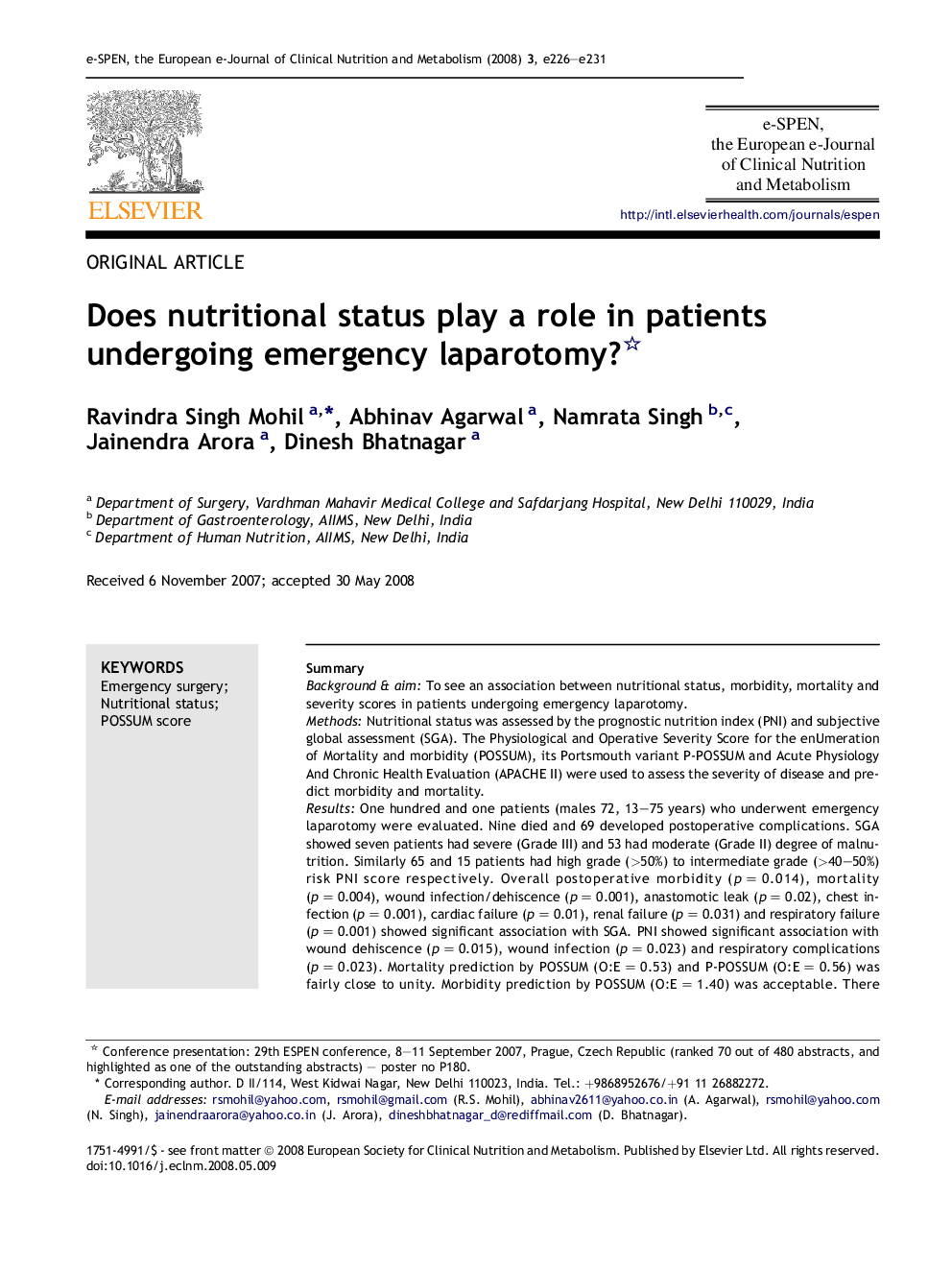| Article ID | Journal | Published Year | Pages | File Type |
|---|---|---|---|---|
| 2689791 | e-SPEN, the European e-Journal of Clinical Nutrition and Metabolism | 2008 | 6 Pages |
SummaryBackground & aimTo see an association between nutritional status, morbidity, mortality and severity scores in patients undergoing emergency laparotomy.MethodsNutritional status was assessed by the prognostic nutrition index (PNI) and subjective global assessment (SGA). The Physiological and Operative Severity Score for the enUmeration of Mortality and morbidity (POSSUM), its Portsmouth variant P-POSSUM and Acute Physiology And Chronic Health Evaluation (APACHE II) were used to assess the severity of disease and predict morbidity and mortality.ResultsOne hundred and one patients (males 72, 13–75 years) who underwent emergency laparotomy were evaluated. Nine died and 69 developed postoperative complications. SGA showed seven patients had severe (Grade III) and 53 had moderate (Grade II) degree of malnutrition. Similarly 65 and 15 patients had high grade (>50%) to intermediate grade (>40–50%) risk PNI score respectively. Overall postoperative morbidity (p = 0.014), mortality (p = 0.004), wound infection/dehiscence (p = 0.001), anastomotic leak (p = 0.02), chest infection (p = 0.001), cardiac failure (p = 0.01), renal failure (p = 0.031) and respiratory failure (p = 0.001) showed significant association with SGA. PNI showed significant association with wound dehiscence (p = 0.015), wound infection (p = 0.023) and respiratory complications (p = 0.023). Mortality prediction by POSSUM (O:E = 0.53) and P-POSSUM (O:E = 0.56) was fairly close to unity. Morbidity prediction by POSSUM (O:E = 1.40) was acceptable. There was a significant association of nutritional status measured by SGA with disease severity (POSSUM p = 0.001, P-POSSUM p = 0.001 and APACHE II p = 0.001). However, PNI showed no association with disease severity.ConclusionsA majority of the patients had poor nutritional status on admission by both the nutritional assessment tools. With the onset of acute emergency, there was a significant relation of nutritional status with disease severity, morbidity and mortality. Of the two nutritional assessment methods studied, SGA seems to be a better tool to assess the pre-existing nutritional state as PNI can be influenced by the acute disease process.
